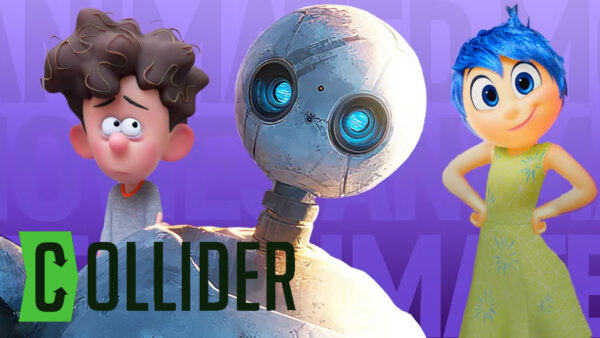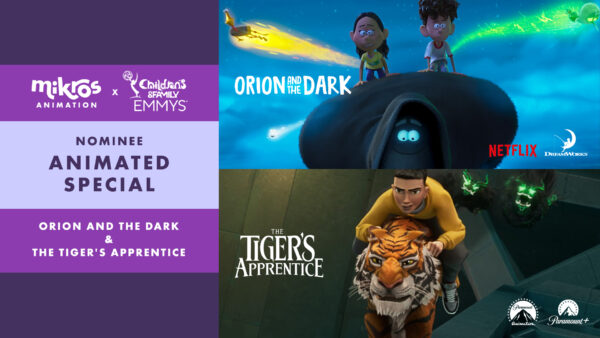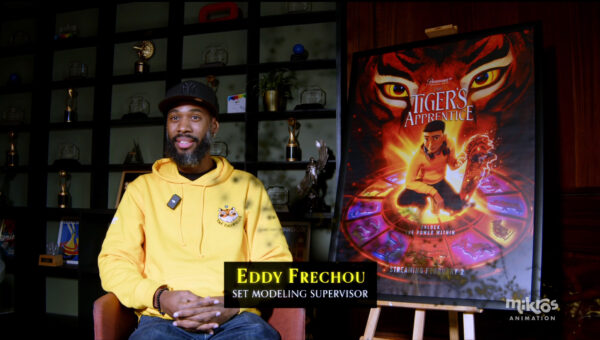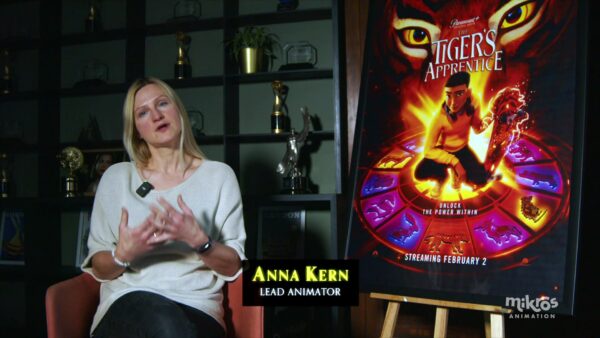
Now it’s Guillem Ramisa De Soto‘s turn to tell you more about his role as Compositing Supervisor on The Tiger’s Apprentice! Fun, stylish and magical are the words he chose to describe the film, which you can finally see on 2 February on Paramount + :
- Could you share more about your journey in animation?
My journey in animation started a few years ago when 2D and 3D were still trying to coexist. I was formally trained as a classic illustrator and painter in an art school full of talented people. We had the chance to be one of the first to get our hands on computers to use them to move our illustrations. By the time I had done one or two simple animations, I knew that was what I always wanted to do. After working as a freelancer for a couple of years and traveling to several European countries for various projects, I eventually landed at Mikros. I was already familiar with the company from watching their films and following their work for a long time, so it was a pleasure to meet everyone involved in their projects and collaborate with them. I had a blast working with amazingly talented people, and I learned a lot, which, for those who know me, they know it’s very important to me.
- What was your role on TA as the Compositing Supervisor?
I began working on the project in March 2021. My role in TA as a Compositing Supervisor had many different tasks, including hiring and managing a team of artists that could deliver the film with the required level of complexity the project was designed for. This team of artists had to work all together and complement each other, not only artistically and technically but also on a human level. I also had the opportunity to work with the Mikros Canadian branch with amazing Supervisors and a super talented team of artists. One of the most interesting parts of working on this film was the collaboration between departments that fed material to compositing. We all worked together to think of clever ways to achieve our goals to get where we thought the project deserved to be. The communication between Compositing and the VFX Supervisor and the CG Supervisors was vital to the project’s success. The project took a long time to complete, so I cannot mention everything I did during my time on it; it could take me all day.
- How was the collaboration with Paramount’s creative teams and Mikros teams?
The collaboration was quite interesting. Paramount’s creative team had extremely talented artists, and it was amazing to work with them. The creative team at Mikros faced an exceptionally challenging task, but we worked hard to accomplish it. The collaborative nature of the animation media made it possible. Whenever someone had the best idea on how to do something, we followed it, and it was often proven to be the best strategy.
- What were the main artistic and technical challenges on TA?
I’d say the style, the style of the movie had its own unique challenges. The idea of having something that’s both graphic and photographic has been done before, but I would say not in this way. We had to invent or use techniques from other media to do what we needed to do, like anamorphic photography on top of a graphic style, or characters that are almost completely shaded in compositing. In a regular animated movie, there are just a bunch of characters that get screen time, but in TA, we had the 12 zodiacs plus Tom, Grandma, Rav, Loo and her demons, and Nü Kua. And each of them had their own peculiarities and visual language.
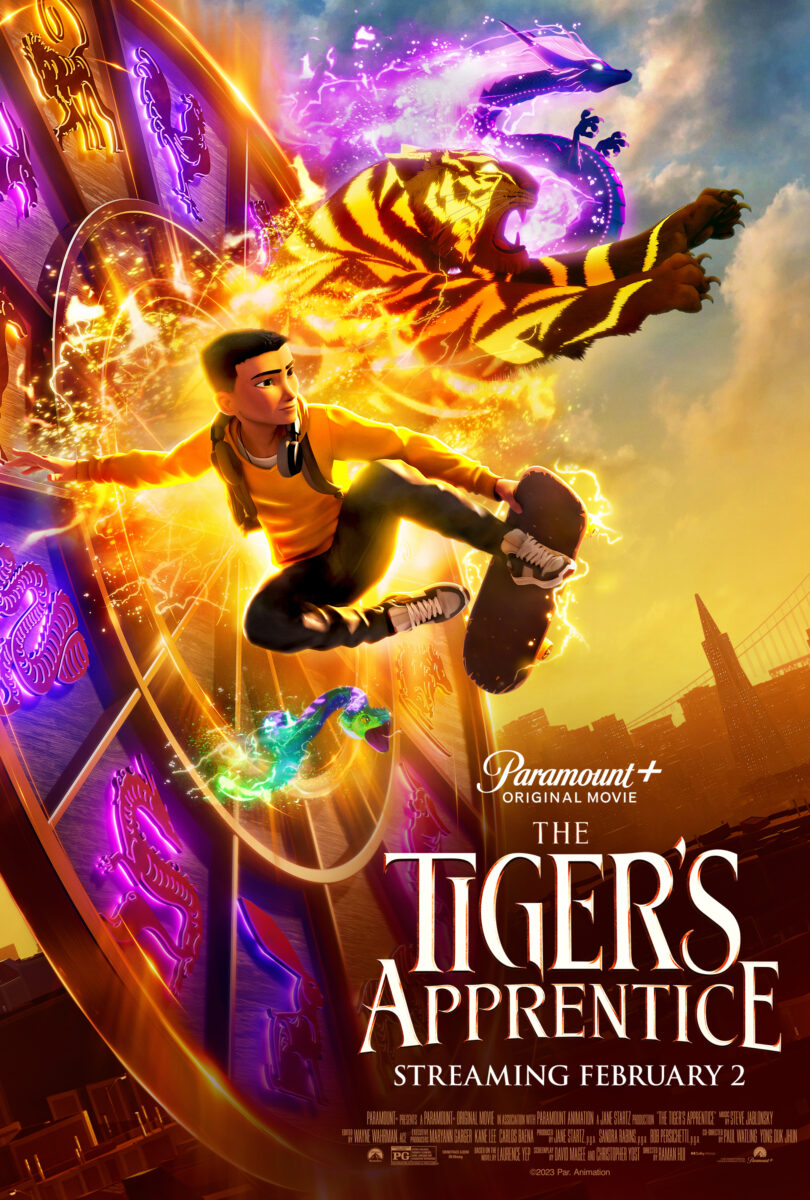
- What’s your favorite scene?
My favorite scene/character must be Nü Kua and her sequence. I think it is a character that appears very little in the movie but looks spectacular. It was a collaborative effort between FX, DMP, Lighting and Compositing to make the character look the way she does; it couldn’t have been done without a total sync between all these departments. It is also the one that took the most time in look development.
- What are you most proud of on TA?
By far the thing I’m most proud of is the amazing team we had in the compositing and lighting department. We worked together as one unit throughout the entire production, and to see a team full of amazing artists grow, learn, and progress not only in their professional careers but also in their personal lives was by far what made me proud of my work in TA.
- Describe the film in 3 words.
Fun, stylish, and magical
- Any last words?
An interesting fact about this movie is that it was conceived to be a stereoscopic movie. This means that a lot of the tricks we would normally do in compositing had to be rethought or redesigned to be “stereo compatible” so that all the effects, DMP, in-camera lens artifacts, and 2D stylization of the film would work perfectly in stereo. One sequence that I won’t reveal has a particular visual style that I’ve never seen done in stereo before. I hope that a stereoscopic version of the movie will be released at some point; if not, I’ll be one of the few that have seen it, and I’m very proud and happy with the work that the whole team has accomplished. And of course, shout out to everyone involved in the movie who worked hard to make it possible!
Thanks Guillem!

